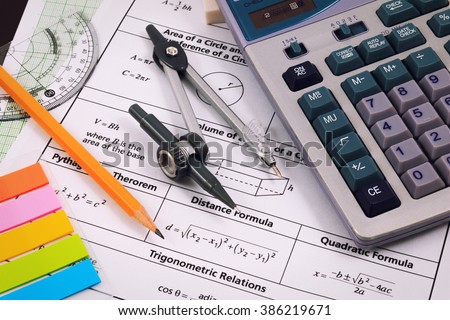 Confidence is a necessary element for success in school mathematics. However, there is a perception among many students who have difficult mathematics. Often this perception results from the faith, especially they can make their calculations to discover that in their evaluation tasks some people who thought they were good, bad. More often than not, false answers are coming, not a lack of understanding, at least initially, but a mistake that made them.
Confidence is a necessary element for success in school mathematics. However, there is a perception among many students who have difficult mathematics. Often this perception results from the faith, especially they can make their calculations to discover that in their evaluation tasks some people who thought they were good, bad. More often than not, false answers are coming, not a lack of understanding, at least initially, but a mistake that made them.Therefore, as a mathematics teacher, spend a lot of time to show the students how to avoid the most mistakes. When I teach a new unit, I explained where it is most likely to be error / mistakes.
This article lists the common mistakes and suggests how to avoid them.
By educating students how and where mistakes or mistakes occur, they will realize that mathematics is not "hard" and regain their confidence and achieve the success they are capable of.
The areas where the students make mistakes in their math with a brief discussion to everyone are listed.
Zone 1: Copy of the question
This is a mistake that makes every student independent of skills. In which creates a situation that solves the question, trust, lose time and undermine not being able. The simple solution is to create a paradigm in the student's self-test.
Zone 2: Creation
Overall bad makes it difficult to find mistakes and go through the process of their solution to find errors in his argument. Grooming, proper use of symbols and vertical placement will help eliminate errors caused by the arms.
Zone 3: No answers the question / error in question
This is obviously obvious that the area where to make a mistake. Teachers should ask the students to read the questions to determine what is needed.
Zone 4: No answer every part of the question
This is clearly evident from Zone 3 above. It occurs when a question involves several parts. The student is prompted to go through each part of each issue when completed.
Zone 5: Do not use the assessment criteria
This is simply an extension of the above ideas. Not meeting the criteria, not only creates poor results, but lost valuable time for testing.
Zone 6: bad diagrams
The diagrams are designed to help students solve a problem and not confuse it. The diagrams must be clean, well-designed, and contain all the information, problem. They must be large enough to find all relevant information to help solve the problem. In geometry, especially my practice class diagrams to make many problems without really solving the problem. Then draw a chart for each to allow them to compare each other.
Zone 7: No test solutions
If you find an answer, the student must decide if the answer is what was to be expected. The student must take into account the type of response that he / she could expect when reading the first issue. In other words, the student must decide whether the answer is realistic. Secondly, the answers should always be tested in solving problems related to equations. If the student follows the correct procedure, try each solution in each equation to ensure that he / she has the correct answer.
Zone 8: Calculator
Calculators are only useful when used properly. It is important that each time the computer is used, the procedure is run a second time to check the first result.
Teacher's role in the elimination of errors:
1. Review the workbook
The teacher must create a model that represents the procedure for any kind of mathematical problem. So from time to time you should consider the pad work of each student's personal student to report the bugs, why they are made, and how to avoid them.
2. Evaluate
Here, the teacher must draw the student's attention to errors in the assessment task in the current assessment document. A personal interview with the student is also desirable. The assessment of the work with the whole class In the review, the teacher should indicate where all mistakes are made for the benefit of all students. Finally, as an incentive mechanism, the teacher should ask each student to lose the number of markers by avoidable errors and how these errors affected the quality of the qualification / degree for the assessment of the element.
3. Avoid teaching errors
Prevention is better than cure. While a new unit teaches, points out always the dangers / where errors occur. Sometimes, to model the mistakes intentionally made answers to see if I could lead the student to mislead or to see if they recognized the errors.
Of course, there are lessons that need to be made the above areas in which errors p need to be avoided. Teach the students how to read the questions. The additional instruction, which is discovered by careful reading of the daily work of the students in the lesson and the time of the evaluation.










